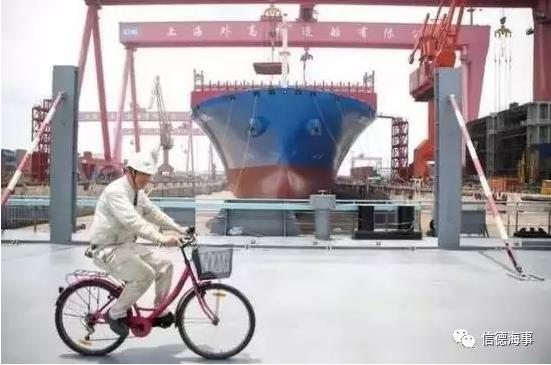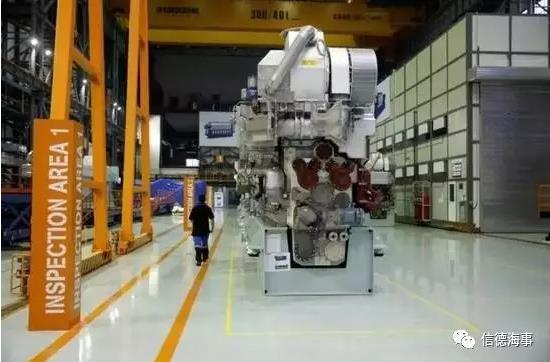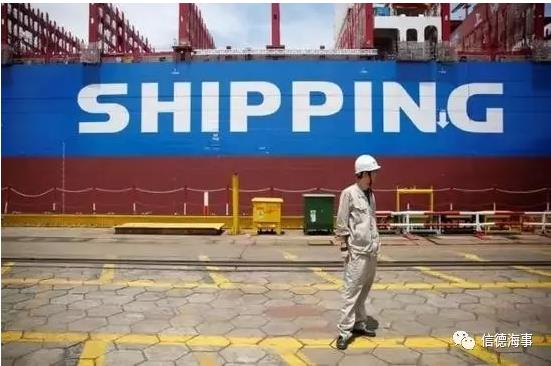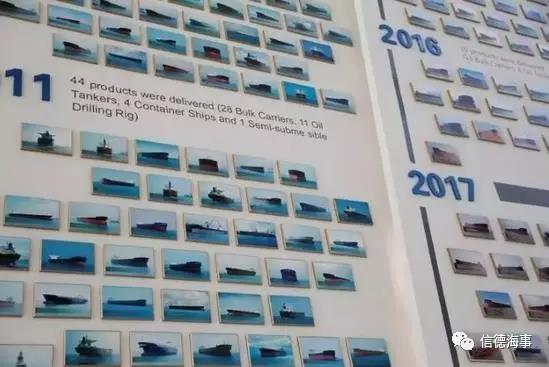
参考消息网7月30日报道 英媒称,中国船厂开始进军邮轮市场,以满足国内对于邮轮度假日益增长的需求,这可能威胁欧洲船厂在这个规模达1170亿美元产业的主导地位。

邮轮需求激发邮轮产业
路透社7月25日以《中国船厂进军邮轮市场 欧洲同业心慌》为题报道称,中国国内对于邮轮旅游的需求每年增长达30%,政府已将邮轮制造列为《中国制造2025》的一项重要目标,以升级国内制造业和支撑船厂就业。中国积极发展价值较高的邮轮产业令欧洲船厂心里打鼓,该产业需要复杂的供应链来制造和装备豪华邮轮,一些欧洲船厂担忧,中国可能开始一步步主导邮轮市场,就像最近数十年在货船市场发生的情况一样。
“这是一项可能导致竞争激烈的国家目标,”德国造船和海洋工业协会执行长莱茵哈德·卢肯表示,“如果中国定下目标,就会有几乎无穷的资源可用。”
不过业内专家称,对中国企业来说,学习如何建造邮轮并非易事,因为它需要有复杂的供应商队伍提供诸多物品,从豪华地毯到隔音材料等不一而足。
引入欧洲经验
在上海位于长江入海口的上海外高桥造船厂中,中国船舶工业集团已引入包括意大利造船商芬坎蒂尼在内的欧洲顾问企业,来帮助学习如何设计并建造邮轮,还引入芬兰瓦锡兰等外国供应商组建本土合资企业。
“芬坎蒂尼公司带来了数百名工人,中船还将技术人员送往英国进行培训,”一名中船员工说。
报道称,中船建造两艘邮轮的订单载客能力多达5000人,这是今年2月同嘉年华和芬坎蒂尼签下的协议的一部分,该协议并附有额外的四艘邮轮选择权。
两位行业高管表示,芬坎蒂尼受到其最大客户嘉年华的带动来帮助中国,后者正在努力开发中国邮轮航线,中国力争要在2030年以前成为仅次于美国的全球第二大邮轮市场。
嘉年华称其鼓励芬坎蒂尼参与这个造船项目,但也指出,嘉年华与中船集团和中投公司合作推出中国首条国内邮轮航线的计划是另外谈判的。芬坎蒂尼称,公司进入中国市场,纯粹是根据对中国市场巨大商机潜力的分析。

造船厂的折扣竞争
报道称,中国进军邮轮行业正值全球对货船需求骤降而导致诸多中国船厂关停之际,因此中国其他造船厂也闻风而动,提出了最高达30%的折扣报价以及提前交货的优惠,争取赢得西方邮轮公司订单。
招商局工业集团在3月达成一份协议,将为总部在迈阿密的SunStone Ships建造最多10艘船;厦门船舶重工在4月赢得了芬兰维京公司的1.94亿欧元订单,为其建造一艘可载客2800人的邮轮。
“有兴趣的造船厂数量让我们惊讶,”维京公司总裁汉尼斯表示,有六家中国造船厂表达兴趣,“竞争永远是好事...如果欧洲造船厂没有竞争,他们就会停滞不前。”
根据行业刊物Seatrade Cruise数据,欧洲造船业者目前到2025年有68艘邮轮订单,轻松超越其他地区同业。
造船厂STX France的工会代表称,有人担心法国船厂最终可能放弃与中国竞争邮轮市场,出于对技术转移的担忧,工会或反对芬坎蒂尼所提议的接管STX France。
中国企业进入邮轮市场的首席顾问老儿·杰克称,试图阻止这种改变可能是徒劳,“大家都紧盯着最活跃的市场。”
原文:
By Brenda Goh SHANGHAI, July 25 (Reuters) – European shipbuilders’ dominance in the $117 billion passengership industry may come under threat as Chinese rivals move into the sector to tap booming local demand for cruise holidays.
China’s government has earmarked cruise shipbuilding as a major objective in its “Made in China 2025” programme to upgrade its domestic manufacturing and support jobs at its shipyards, as domestic demand for cruise trips increases 30 percent a year.
This push into the higher-value cruise vessel sector is rattling European yards, leaders in an industry that requires sophisticated supply chains to make and fit out complex luxury liners. Some Europeanshipbuilders fear China could come to dominate the cruise ship market, much as it has done in cargo ships over recent decades.
“This is a state objective that threatens to cause tremendous distortion in competition,” said Reinhard Luken, chief executive of the German Shipbuilding and Ocean Industries Association (VSM), which represents German maritime firms such as shipbuilders Meyer Werft and Meyer Turku.
“There are almost endless resources available if China has set a goal.”
Still, learning how to build cruise ships will not be easy for the Chinese, given the complex web of suppliers needed to furnish items from luxury carpets to soundproofing, industry experts say.
Japan’s Mitsubishi Heavy Industries quit building European cruise liners in October after its losses on two vessels for cruise operator Carnival Corp topped $2 billion.
“It’s a hotel on the sea, (and) requires at least a few hundred suppliers,” said Lin Li, general manager at Lloyds’ Register’s Greater China marine and offshore business development department.
China’s shift into the cruise sector also comes as global demand for cargo ships has collapsed, shuttering scores of Chinese yards.
At the Shanghai Waigaoqiao Shipbuilding yard at the mouth of the Yangtze River, China StateShipbuilding Corp (CSSC) has brought in European advisers, including Italian shipbuilder Fincantieri, to help it learn how to compete in building cruise ships.
It has also attracted foreign suppliers such as Finland’s Wartsila to set up local joint ventures.
“Fincantieri has brought a few hundred workers here, and CSSC has sent technical staff to England for training,” said Alan Mong, a CSSC employee, during a recent media tour of the yard.
CSSC’s order for two cruise ships, which will be able to carry up to 5,000 passengers, is part of a $1.5 billion deal signed in February with Carnival and Fincantieri. That deal, three years in the making, also includes an option for four more ships.
Fincantieri was encouraged to help China by Carnival, its biggest customer, which is itself pushing to develop China cruise lines, said two industry executives familiar with the local market. They asked not to be named as they didn’t want to jeopardise business relationships.
They said Carnival was told by the Chinese government it could only grow in China’s cruise market – projected to be the world’s second largest after the United States by 2030 – by helping the domestic industry develop.
CSSC did not respond to Reuters’ request for comment. China’s Ministry of Commerce declined to comment, saying it was a company matter.
Carnival said it encouraged Fincantieri to participate in the shipbuilding project, but noted its own plans to launch China’s first domestic cruise line with CSSC and China Investment Corp were negotiated independently. Fincantieri said it got into the Chinese market “based nothing more than on an analysis regarding the business opportunities from the great potential of the market.”
Other Chinese yards are following suit, offering discounts of up to 30 percent, and earlier delivery, to win orders from Western cruise lines.
In March, China Merchants Industry Holdings agreed a deal to build up to 10 vessels for Miami-based SunStone Ships, and Xiamen Shipbuilding Industry Co won a 194 million euro ($222 million) order from Finland’s Viking Line in April for a 2,800-passenger cruise ferry.
“We were surprised at the number of interested yards,” said Viking Line’s CEO Jan Hanses, saying he received interest from six Chinese yards, including Guangzhou International Shipyard, Yantai CIMC Raffles and AVIC Weihai Shipyard.
“Competition is always good… If the European yards are left without competition they will stagnate.”
European yards currently have 68 cruise ships on order up to 2025, according to data from industry publication Seatrade Cruise, comfortably ahead of other regions.
But Nathalie Durand-Prinborgne, a representative for labour union Force Ouvrière’s section atshipbuilder STX France, said there are fears that French shipyards could eventually abandon the cruise market to the Chinese, as they did with LNG tankers.
Because of technology transfer concerns, she said the union opposes Fincantieri’s proposed takeover of STX France, which employs 2,600 people at the western port of Saint-Nazaire.
“In allying itself with the Chinese, Fincantieri not only shot itself in the foot, but also fired into ours,” she added.
And Raoul Jack, principal consultant at PFJ Maritime, an adviser to Chinese yards entering the cruise market, says it may be futile to try and stop the shift.
“Every yard is looking at the markets that are the most buoyant,” he said.
($1 = 0.8757 euros) (Reporting by Brenda Goh, with additional reporting by Guillaume Frouin in NANTES and SHANGHAI Newsroom; Editing by Ian Geoghegan)
免责声明:本文仅代表作者个人观点,与信德海事无关。其原创性以及文中陈述文字和内容未经本站证实,对本文以及其中全部或者部分内容、文字的真实性、完整性、及时性本站不作任何保证或承诺,请读者仅作参考,并请自行核实相关内容。
投稿或联系信德海事:
admin@xindemarine.com
11-01 来源:信德海事网
06-01 来源:信德海事网
06-20 来源:信德海事网
07-19 来源:中国船东互保协会资讯平台
04-12 来源:信德海事网
12-10 来源:船之友 作者验船师袁晓东
10-15 来源:中远海运
07-04 来源:信德海事网 刘云婷
03-30 来源:信德海事网
01-22 来源:信德海事网